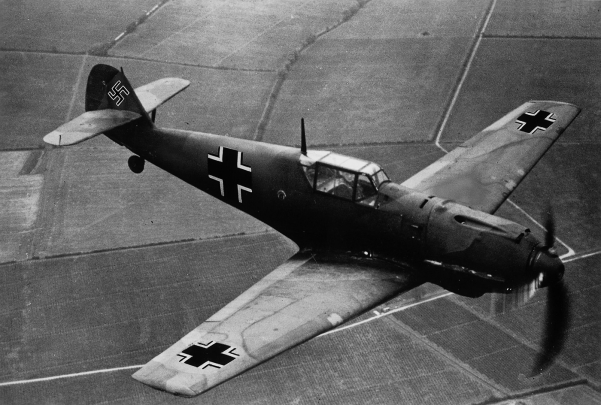
The Bf 109 was the standard Luftwaffe fighter of the war, with more than 30,500 examples built before and during it. Willy Messerschmitt began work on this classic machine in 1935, in response to Germany’s requirement for its first “modern” monoplane fighter (see Heinkel He 112). It was revealed in September 1935, when the first of 13 prototypes flew. The Bf 109B entered service in April 1937 and was followed by the Bf 109C with extra guns. Both saw service in the Spanish Civil War. They were followed by the Bf 109D and the Bf 109E (“Emil”), which entered service at the end of 1938 and was Germany’s standard single-seat fighter at the start of World War II – instrumental in Luftwaffe successes over Poland, Scandinavia and the Low Countries.
Only when it took part in the Battle of Britain were its limitations realized. Predictably, the Bf 109 was developed into many variants – when standardization would have benefited the war effort. Engines, armament, nose profiles, cockpit hoods, modified flying services and the like were all refined in attempts to maintain combat proficiency. The most numerous variant (23,500) was the Bf 109G, but few of those who flew it would dispute that improvements in the type’s speed and firepower – gained by the introduction of the more powerful DB 605 engine – resulted in poorer overall handling qualities.
Specifications
- Manufacturer
- Messerschmitt A.G
- Type
- Fighter, Fighter-Bomber
- Length
- 8.85m (29ft 0.5in)
- Span
- 9.92m (32ft 6.5in)
- Height
- 2.50m (8ft 2.5in )
- Maximum Speed
- 621km/h (386mph)
- Service Ceiling
- 11,550m (37,890ft)
- Range
- 1000km (621 miles)
- Crew
- One
- Powerplant
- 1 x DB 605
- Armament
- 1 x cannon, 2 x MG
- Bomb Load
- 250kg (551lb)
- First Flight
- Late 1935
- Initial Climb
- 950m (3116ft) per min
- Weight (empty)
- 2673kg (5893lb)
- Weight (loaded)
- 3400kg (7496lb)
